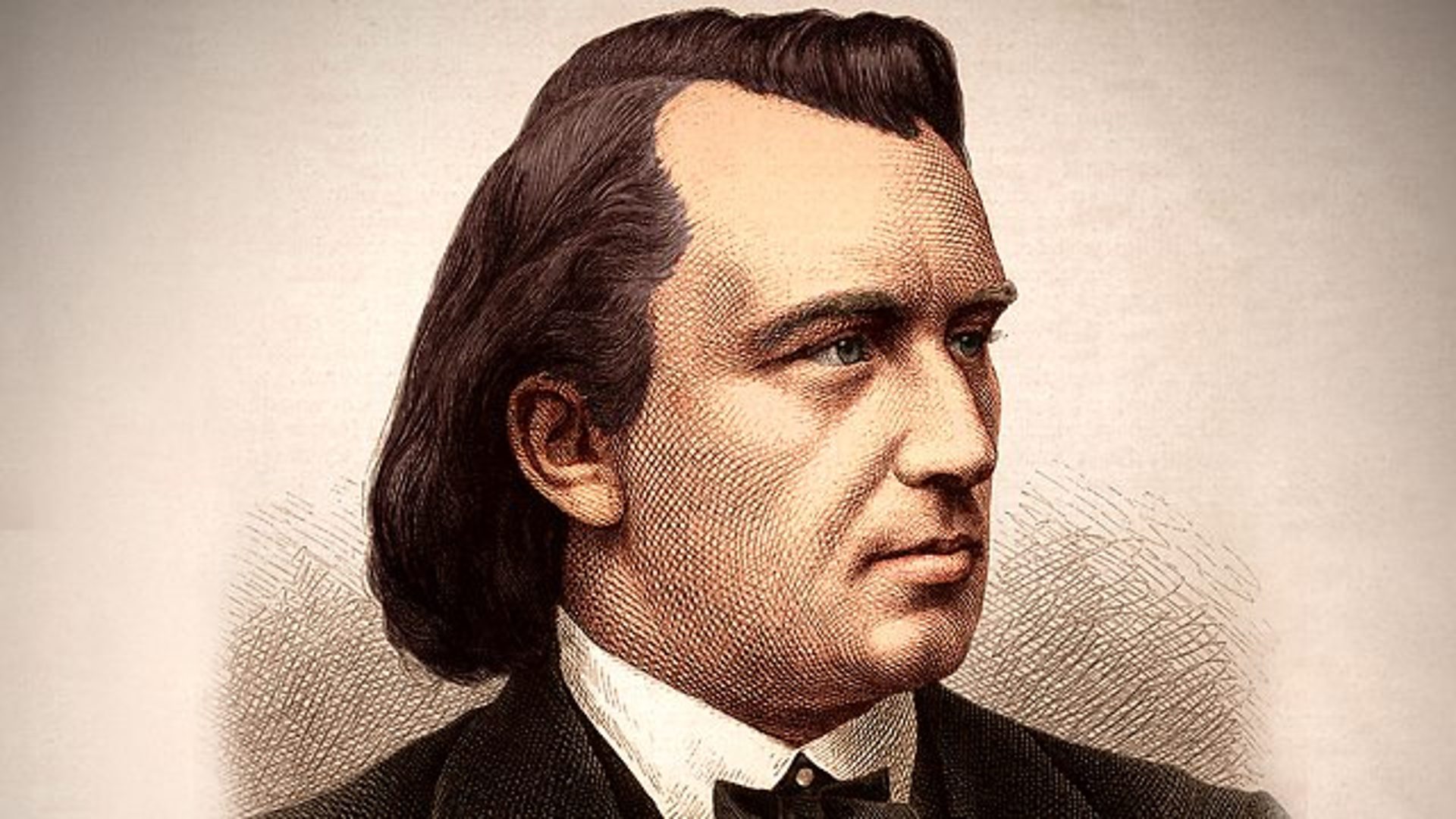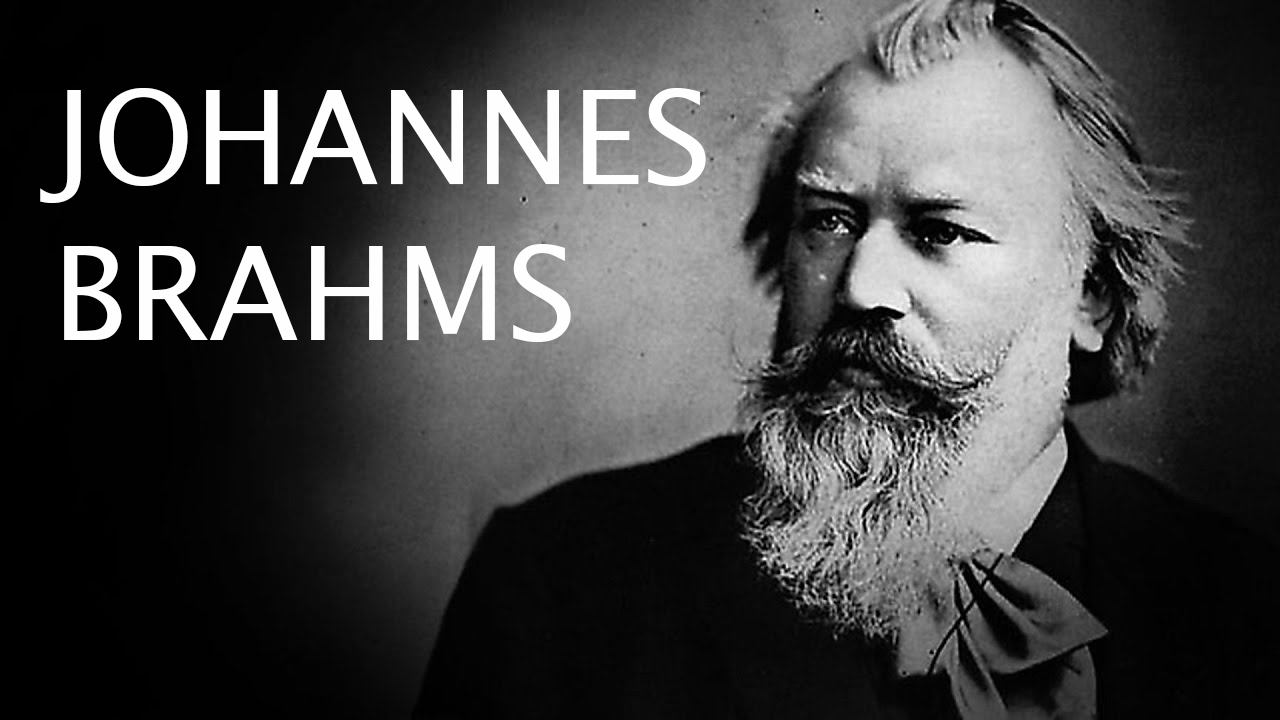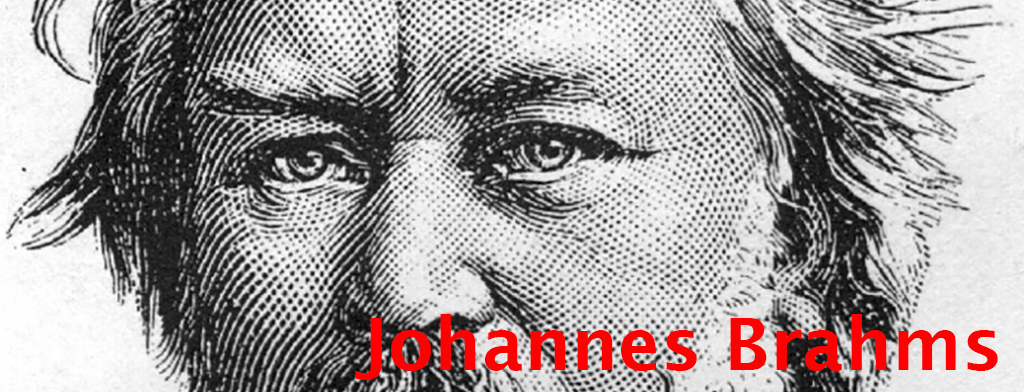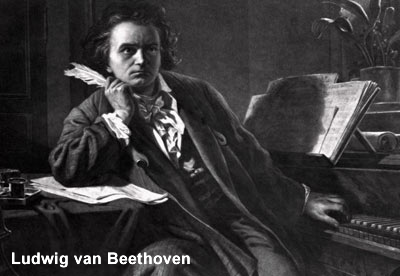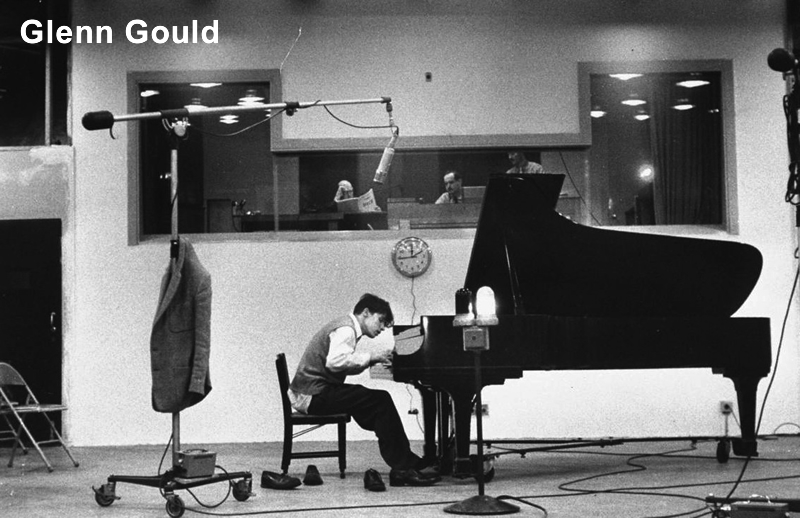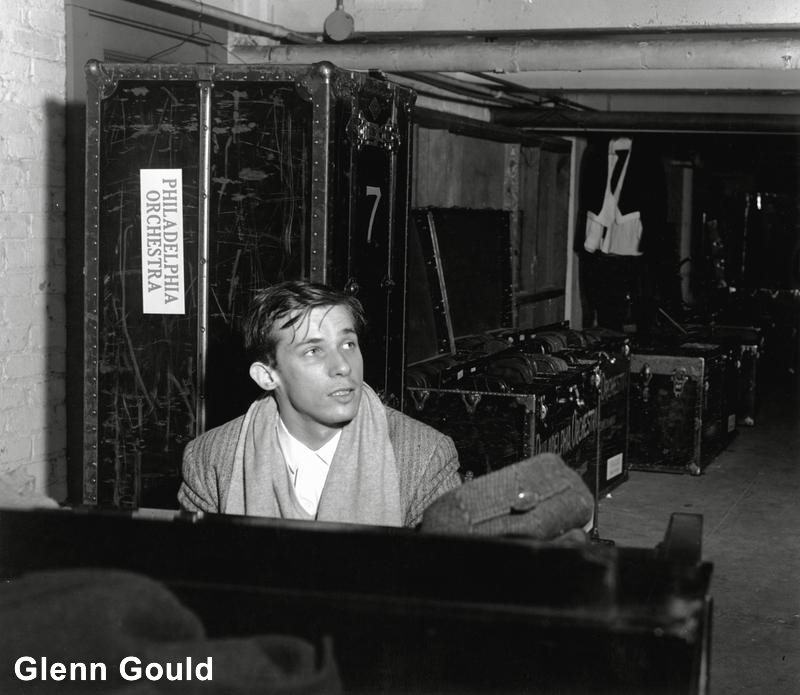Johannes Brahms (1833-1897)
Five Trios – Volume 1
Produced: Ward Botsford
Golub-Kaplan-Carr Trio
David Jolley – Horn
Recorded at Concordia College – February 16, 17, 18 & 25, 1989
ONE-SENTENCE REVIEW:
Jesus F-ing Christ, it’s chamber music by Brahms played by world-class musicians – is there a negative? NO!
ORIGINAL LINER NOTES (Dr. Joseph Braunstein, 1989):
Brahms And The Trio
Reviewing Brahms’ piano trios in the context of his oeuvre it is instructive to compare his relevant output with Beethoven’s. Beethoven began his official compositional activity with the set of three piano trios published as Op. 1.
They were actually not his first, for he had composed two trios in Bonn before. Hidden in Vienna, they surfaced only after his death and were never included in practical editions through almost two centuries.
Beethoven’s first piano trios originated before 1792 and his last, the Trio in B-flat, Op. 97, was composed around 1811-12, though published in 1816. To be sure he wrote a piece for piano, violin and cello probably around 1816 which was published in 1824 as Op. 121a.
This opus number is chronologically misleading. These are variations for a trio ensemble, not a standard trio in several movements. Evidently no circumstances occurred to prompt Beethoven to create a piano trio in his last decade of his life.
The case of Brahms is different. He had destroyed the works written in his youth. We do know whether a piano trio was among them. His first work of this category, the Trio in B Major, Op. 8 is the achievement of an accomplished composer who had three piano sonatas but no chamber music piece to his credit so far.
In contrast to Beethoven, Brahms assigned the piano an extraordinarily communicative role in his chamber music throughout his life. Op. 8 was written in 1854 when he was twenty-one, while the Trio in A Minor, Op. 114 was composed in 1891, six years before his death at the age of sixty-four.
TRIO IN B MAJOR, OP. 8
Brahms sketched the Trio in B Major in the summer of 1853 when he journeyed on foot, with a walking staff and knapsack, along the Rhine from Gottingen to Hanover. Completed in 1854 it was published in Leipzig in November 1854. There were two private readings in Dusseldorf, one at the home of Clara Schumann with Brahms at the piano and Joseph Joachim on the violin.
The first public hearing occurred on November 27, 1855 at Dodworth Hall in New York. The performers were William Mason (1829-1908), a pupil of Moscheles and Liszt; Theodore Thomas (1835-1905), later conductor of the Chicago Symphony Orchestra; and Carl Bergmann (1821-1876) who became conductor of the New York Philharmonic Orchestra.
The Trio in B Major is a unique creation in view of the key and the architectural dimensions of its original shape. The choice of the very seldom used key of B Major justifies a brief note. Not counting the short Preludes and Fugues in B Major of the Well Tempered Clavier, where the key of B Major was a foregone conclusion because of the didactic concept of the work, no large-scale composition, sonata, suite or concerto in B major by Bach, Carl Philippe Emmanuel Bach nor Handel exists. (Domenico Scarlatti’s K. 245, 246, 261 and 262 in B Major are not works in several movements.)
There are no sonatas, chamber music or orchestral compositions by Haydn, Mozart and Beethoven in B Major, Schubert broke the spell in his Piano Sonata in B Major, D 575, composed in 1817, published about 1844, which may have come to Brahms’ attention. The key of B major does not appear in larger works of Mendelssohn and Schumann either. Thus the trio of Brahms was the first important composition in B major without have B major successors of consequence.
This Trio constitutes a unique case within Brahms’ oeuvre because of its length. Brahms was fond of the Trio, yet in the course of time had second thoughts about it. At a performance in Vienna in 1871, he insisted on a substantial cut in the first movement. Finally, he decided on a thorough revision which received its public try-out in Budapest in December 1889 with Brahms at the piano, the Hungarian violinist Jeno Hubay, and the cellist David Popper.
In composing the B Major Trio, Brahms had taken as a point of departure Schubert’s trios, which are of symphonic proportion. So is Brahms’ piece whose measure total of 1628 exceeds that of all his instrumental works. To give a drastic example the Third Symphony is “only” 839 measures long. Thus the reworking resulted in a considerable shortening.
Numerically the “New Edition” (Neue Ausgabe), as Brahms called the recomposed work, is 458 measures shorter and the contents are considerably different. The Trio was a creation of Brahms’ youth, while the revision represents the result of deliberations of a composer whose position in music history was definitely established.
The Neue Ausgabe is essentially a new composition, the retained Scherzo notwithstanding, and we know that Brahms enjoyed it as such. Thus the retained ops number 8 is misleading and the opus number 111 applied to the String Quintet in G Major of 1891 would be more appropriate chronologically. Between the Trio of 1854 and that of 1891 stands most of Brahms’ entire creative life.
The principal idea of the first movement (Allegro con brio, 4/4, cut time) not only generates the Scherzo idea which, incidentally, reappears in the last movement of the “Horn Trio” but occurs slightly altered in the “March of the Dead” in the German Requiem and in the finale of the First Symphony. Substantial cuts and the omission of the fugal passage were made to the movement to achieve a tightly organized structure.
The quick Scherzo (Allegro molto, B Minor, 3/4), displaying minor-major dichotomy, was generally left intact except for the conclusion. The transparency and the deft coda in particular reveal the distinct Mendelssohn touch.
The Adagio (B Major, 4/4) underwent drastic changes. There was, strangely enough, a two measure quotation from Schubert’s song Am Meer serving as the second theme, the excision of which Brahms deemed necessary and justly so. The Adagio quality was seriously impaired by an Allegro portion of more than 60 measures. This passage removed, the movement closes quietly and gently. The tender lyricism of the Adagio is sharply contrasted with the Finale in B Minor (Allegro, 4/4).
The puzzling abandonment of the basic key B Major is partly made good, however, by the introduction of a new beautiful melody which first enters in D Major and reappears in B Major in the recapitulation. Yet B Minor prevails in the vigorous coda.
TRIO FOR PIANO, VIOLIN, AND HORN IN E-FLAT, OP. 40
Brahms composed this Trio, colloquially referred to as the “Horn Trio,” in May 1868 in Lichvental, a suburb of the well-known spa Baden-Baden. There he occupied a little place with a charming view of the country, its wooded hills and nearby forests which he used to roam. He was still suffering from the death of his mother who had passed away in February of that year.
For the unusual combination of piano, violin and horn Brahms had no model. These were the instruments he played in his boyhood. For this trio, Brahms thought of the so-called natural horn, colloquially referred to as Waldhorn (foresthorn) and actually used this term for the publication of the work.
The instrument was familiar to German audiences from the overtures to Der Freischultz and Oberon, and the Notturno in Mendelssohn’s music to A Midsummer Night’s Dream and the hunting scene at the close of the first act of Tannhauser where waldhorns sound in abundance. Siegfried’s horncall was then still ten years away.
Chromatic notes which the overtone series lacks could not be produced “naturally” on the waldhorn. The invention of the valve mechanism corrected the deficiency, but Wagner contended in the preface to the score of Tristan und Isolde that the technical improvement brought about “an undeniable loss of the beauty of its tone.”
That was correct for the 1850s and 1860s and the composer of Tristan even reckoned with the unavoidable improvement of the valve horn. Brahms would probably not find fault with the instruments and the delivery of his melodies by the players of our time. Thanks to modern technology the valves of horns are now greatly improved over their placement in the crude valved instruments of Brahms’ day.
While Brahms’ first trio was unusual because of its key and large dimension, the second occupies a special position on account of the scoring and the structure of the first movement (Andante, 2/4). This is not the customary sonata movement but a rondo-like five-section piece in which the division in 2/4 and 9/8 (poco piu animato) and the modified first section comprise the coda.
Lyricism is the keynote which is sharply contrasted with the vigorously racing Scherzo, a companion piece to the Scherzo of the B Major Trio. The Scherzo theme which foreshadows the principal ideas of the finale includes the ancient Gregorian Gloria intonation.
The slower Trio (Molto meno Allegro) is in the key of A-Flat Minor (seven flats) which, of course, causes intonation difficulties for the violinist. They are not mitigated in the following Adagio mesto in E-Flat Minor (6/8). This is a lament in memory of Brahms’ mother. The sorrowful mood turns passionate before the mild ending.
The Finale (Allegro con brio, 6/8) is a true movement a la chasse. The speedy motion in which the horn like the waldhorn of yore lustily participates is kept up throughout. At the request of the publisher Simrock, Brahms edited version in which the horn part was transposed for violin and cello respectively. He recognized the sales possibility. The Trio was dear to Brahms for happy (Lichtental) and sad memories and he was very grateful to those players who performed their part on the natural horn.
THE NEW YORK TIMES ON THE SCHUBERT TRIOS
“Golub, Kaplan and Carr play with great finesse. Their carefully thought out and brilliantly executed interpretations are thoroughly convincing… The artists have gone back to the original manuscript of the Op. 100, restored the pre-publication cut, and recorded both versions of the finale, so that the listener can program the compact disc either way.”
On both side of the Atlantic, the Golub/Kaplain/Carr Trio has been acclaimed as one of the finest piano trios before the public today. Robert C. Marsh of the Chicago Sun-Times hailed their performance as “… bursting with genius. I cannot recall an occasion in which this music was played with such complete conviction.” The Trio has toured throughout the United States and Europe in major centers including New York, Los Angeles, Dallas, Chicago, Washington, London and Paris.
Their electrifying performance in Washington D.C. lead the Washington Post critic to write, “When musicians with international renown as soloists join forces, one awaits, sometimes fruitlessly, a revelatory performance that lives up to the individual talents. Yesterday proved that such a blending is not a pipe dream.”
They have also appeared to great critical acclaim with many major orchestras, performing the well-known and beloved Beethoven Triple Concerto.
David Galub, Mark Kaplan and Colin Carr are celebrated solo artists, with performances throughout the world at leading music festivals including Ravinia, Blossom, Spoleto and Marlboro, and with orchestras of Philadelphia, New York, Chicago, Cleveland, London, Berlin and Montreal.
One of his generation’s most notable and acclaimed horn players, David Jolley has brought his remarkable virtuosity to audiences in the United States and Europe as a soloist, recitalist and chamber musician, as well as a versatile and highly respected recording artist.
TRACK LISTING:
Johannes Brahms – Trio In B Major, Op. 8 For Violin, Cello and Piano
- Movement 1 [Allegro con brio) 13:45
- Movement 2 [Scherzo – allegro molto] 6:20
- Movement 3 [Adagio] 8:38
- Movement 4 [Allegro] 6:04
Johannes Brahms – Horn Trio in E-Flat Major, Op. 40 for Horn, Violin and Piano
- Movement 1 [Andante] 9:46
- Movement 2 [Scherzo – Allegro] 7:46
- Movement 3 [Adagio mesto] 8:27
- Movement 4 [Finale – Allegro con brio] 6:02
https://youtu.be/x0-eerJgqZI
https://youtu.be/ORvvsRawgDo
FINAL THOUGHT:
Chamber music writing at its finest. Schubert – I know, I got your Schubert right here – but Goddamned, Brahms is the freakin’ man. That horn trio? Come on, seriously?!
 Emily Sachs – President – Manka Music Group (A division of Manka Bros. Studios – The World’s Largest Media Company)
Emily Sachs – President – Manka Music Group (A division of Manka Bros. Studios – The World’s Largest Media Company)



